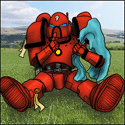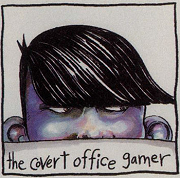|
Nebakenezzer posted:When you quote it like that, I have to say it should be "the Nazis were dicks." Milhist thread: The Nazis could have, except they were dicks Xiahou Dun posted:I believe Hey Guns was pointing out that it might be kinda funny haha cultures are different today*, but relatively recently it was overtly racist and maybe you should, you know, not. For the record I was trying to make a meta-joke, given that I learned about the macaroni rule from the prior version of this same thread. Anyway, here's an ask to try and rerail: There are a lot of opinions on how armor is attached to BBs and specifically BB turrets at this link: https://www.quora.com/Were-the-larg...ates-or-welding So... did they weld turrets and rivet citadel, or did they do 1-foot-thick+ welding on the grounds that anything that required opening up the citadel was a months-long drydock thing and the durability was worth the accessability hit? If it was all welded then wouldn't that cause problems with having a very large rigid object in the middle of the ship (or is that a good thing in the battleship displacement range?)
|
|
|
|

|
| # ? Jun 2, 2024 10:33 |
As a follow-up to Cyrano's very excellent posts on the mindset of Nazis, I just came across this excerpt from Goebbels' diary on March 27, 1942 that should show how the hardcore True Believer Nazis thought:quote:The Jews are now being pushed out of the General Government, beginning near Lublin, to the East. A pretty barbaric procedure is being applied here, and it is not to be described in any more detail, and not much is left of the Jews themselves. In general one may conclude that 60% of them must be liquidated, while only 40% can be put to work. The former Gauleiter of Vienna [Globocnik], who is carrying out this action, is doing it pretty prudently and with a procedure that doesn't work too conspicuously. The Jews are being punished barbarically, to be sure, but they have fully deserved it. The prophecy that the FŁhrer issued to them on the way, for the eventuality that they started a new world war, is beginning to realise itself in the most terrible manner. One must not allow any sentimentalities to rule in these matters. If we did not defend ourselves against them, the Jews would annihilate us. It is a struggle for life and death between the Aryan race and the Jewish bacillus. No other government and no other regime could muster the strength for a general solution of the question. Here too, the FŁhrer is the persistent pioneer and spokesman of a radical solution, which is demanded by the way things are and thus appears to be unavoidable. Thank God, during the war we now have a whole series of possibilities which were barred to us in peacetime. We must exploit them. The ghettos which are becoming available in the General Government are now being filled with the Jews who are being pushed out of the Reich, and after a certain time the process is then to renew itself here. Jewry has nothing to laugh about
|
|
|
|
|
hey what kinds of writings are there about the military response to the 1918 pandemic flu?
|
|
|
|
FAUXTON posted:hey what kinds of writings are there about the military response to the 1918 pandemic flu? Thereís a lot of conscientious objector responses yes thatís right Iím back in the thread Edit: loads of them died of it, largely due to unchecked and unquarantined spread in prisons and home office work camps. As youíd expect this is largely before it becomes acknowledged as a worldwide issue so thereís lots of talk of them as martyrs and other similar language, which slowly fades as people realise itís more indiscriminate than previously thought. lenoon fucked around with this message at 12:05 on Feb 26, 2020 |
|
|
|
Xiahou Dun posted:I believe Hey Guns was pointing out that it might be kinda funny haha cultures are different today*, but relatively recently it was overtly racist
|
|
|
|
The US would have won in Afghanistan but we didnt have enough water to boil our four fingers of death.
|
|
|
|
Just boil em in Ripits
|
|
|
|
HEY GUNS posted:yeah. now we're "white," in the past we "weren't," and in the generation before that there were lynchings. so in 2020 it's not a big deal but my dad remembers when it would have been AFAIK one of my grandparents emigrated from Italy, so I do apologize for any offense but please be aware it was inadvertent. Milhist fact: The Nazis actually bothered to invade and occupy Luxemborg, starting at 4:35am on May 9th 1940 and concluded by noon. The army [1] was confined to barracks at that point, but Wikipedia does note that "An attack by German agents in civilian clothes against the Schuster Line[2] and radio stations was however repulsed" which raises, I think, more questions than it answers. [1] 13 officers, 255 armed gendarmes and 425 soldiers. Obviously a threat to the Volk. [2] "a series of roadblocks across Luxembourg's eastern border with Germany. The fortifications, known as the Schuster Line, were largely made of steel and concrete."
|
|
|
|
A Paradox gamer's worst nightmare:  The Republic of German-Austria which existed for a year.
|
|
|
|
Didn't it take like a week for the German army to finish crossing the Luxembourg border due to all the traffic jams though?
|
|
|
|
thepopmonster posted:There are a lot of opinions on how armor is attached to BBs and specifically BB turrets at this link: https://www.quora.com/Were-the-larg...ates-or-welding Armour was not a structural element, but was added on to the hull after it had been constructed. The hull frames and plating were riveted or welded together, to form the ship's structure. The armour was then bolted on to the ship, often after it had been launched. Unlike with the shell plating, individual armour plates weren't attached to each other. The bolts used were large (3-4in in diameter for the armour used on the Iron Duke class of 1912), and had a neck to ensure that the screw threads were not the narrowest part of the bolt. The armour was typically attached to a backing plate to catch spalling. This made repairs fairly straightforwards - a damaged plate was simply unbolted and repaired or replaced. Turrets were somewhat different, because they didn't have an internal structure, unlike the hull. Typically, a ship's turret would be assembled in a workshop, which had a pit wide and deep enough to take the turret 'stalk' (which contained the hoists and turntable), as well as the armoured gunhouse. This allowed it to be tested, before being broken down into its constituent parts, and brought to the ship for final assembly. Turrets were typically bolted together, though they might also be welded or rivveted together on final assembly. Having a large rigid object in a hole in the middle of the ship did lead to problems - the quadruple turrets on the British King George V class battleships had frequent reliability issues, caused by the ship's structure warping around the turrets.
|
|
|
|
MikeCrotch posted:Didn't it take like a week for the German army to finish crossing the Luxembourg border due to all the traffic jams though? Doesn't have to mean the job wasn't done by then, only that the rest of the army was too slow. 
|
|
|
|
Iím interested in the many peculiar uncited statements by historians about USS Ranger (CV-4). Below is a favorite of mine where Clark Reynolds singles out Ranger and Ranger alone as not in consideration for the postwar fleet. "The Fast Carriers: The Forging of an Air Navy" by Clark Reynolds posted:Rapid completion of carriers then building was what Nimitz wanted, but the airmen and Admiral Horne also had postwar concerns. On 17 August Admiral Fitch informed Horne that the postwar navy needed three battle, 11 heavy, and 17 escort carriers.⁸ But the 35 carriers in commission or building at the beginning of the summer seemed insufficient. Consequently, during the summer Navy-contracted shipbuilders laid down three more Essexes, another Midway battle carrier, and two light carriers of a new Saipan class. As late as January 1945 one more Essex was laid down. The aviators would one day have a stockpile of no less than 41 attack carriers (excluding the old Ranger) from which to ďscale downĒ into a respectable postwar fleet. Iíve long wondered why Reynolds singled out Ranger. Not one of the three surviving prewar carriers had much chance at an active postwar career, and yet of the three it was Ranger who came out of the war with an active assignment. Pownall requested and received Ranger as Pensacolaís training carrier. Among the reasons Pownall stated was to give pilots early familiarization with fleet type CV. Seems to me Reynolds went out of his way to make a statement that he doesnít consider Ranger an Ďattack carrierí. I wish to give him the benefit of the doubt that his belief is not just personal but was held by key Navy officials too. Iíve long been looking for sources that support or refute Reynolds and others. In the context of the construction program regarding the quote above I found this: 1945-1946 Operating Force Plan, dated July 1944 posted:CV On Hand June 30 1944 Grand total of 42 carriers. Youíre full* of poo poo Clark. *Much of the rest of your book is great. Iím still amazed at many of the sources I know youíve seen and didnít cite.
|
|
|
|
Jobbo_Fett posted:Pretty much. Doesn't help that Italy sent its better troops to Russia, then hired one of their worst generals on the basis of seniority to oversee the troops in Russia, and got wiped off the map because, for the most part, they couldn't do much in the mobile warfare that had developed, even with the tanks and trucks they had been given. It seems a bit strange that the Italians were so under-motorized because the Italians had developed the 3RO which was a very decent truck. Just not enough of them due to production and resource constraints.
|
|
|
|
lenoon posted:
Yay! Love your CO posting.
|
|
|
|
KYOON GRIFFEY JR posted:It seems a bit strange that the Italians were so under-motorized because the Italians had developed the 3RO which was a very decent truck. Just not enough of them due to production and resource constraints. If there's one major issue the Italians had in WW2, it was a noticeable deficit in production capability when compared to every other major nation.
|
|
|
|
Urcinius posted:Iím interested in the many peculiar uncited statements by historians about USS Ranger (CV-4). Below is a favorite of mine where Clark Reynolds singles out Ranger and Ranger alone as not in consideration for the postwar fleet. Ranger's not a front line fleet unit and would not be. Period, full stop. She's ideal for a training carrier because she was too slow for front-line use in the Pacific during WWII and so avoided any damage and wasn't busy with other tasks. Saratoga and Enterprise both took nasty hits, but in theory (much like Franklin and Bunker Hill) they could probably be rebuilt to fleet units if needed. That the ship that wasn't up to be part of a fleet that tangled with the IJN in 1943 when carriers were in desperately short supply wasn't up to being a front line unit of a navy that had the luxury of choosing which midways and essexes they'd be keeping. In the interim though, a carrier that's just like a fleet carrier but incapable of operating in a fleet is perfect for training roles.
|
|
|
|
Urcinius has posted extensively on Ranger in the third and fourth iterations of the thread (links go to his post history in each).
|
|
|
|
|
OpenlyEvilJello posted:Urcinius has posted extensively on Ranger in the third and fourth iterations of the thread (links go to his post history in each). Good grief. A ship doesn't have to be a bad ship to not have a place in an intended fleet.
|
|
|
|
thepopmonster posted:AFAIK one of my grandparents emigrated from Italy, so I do apologize for any offense but please be aware it was inadvertent.
|
|
|
|
Randomcheese3 posted:Having a large rigid object in a hole in the middle of the ship did lead to problems - the quadruple turrets on the British King George V class battleships had frequent reliability issues, caused by the ship's structure warping around the turrets. Jesus Christ, what  So we have this thing we're putting in our ship, it's an armored gun emplacement with four gigantic guns, so in addition to weighing god knows how much it has to sit to allow rotation, so the thing it is socketed into, Alvin, should be strong enough to let it sit there without warping we do not just say "good enough", we do math to confirm it
|
|
|
|
Nebakenezzer posted:Jesus Christ, what I probably should have been clearer there - it wasn't the weight of the turret warping the hull, but the action of the waves. As a ship moves through the sea, it experiences a bunch of stresses from wave action. The two easiest to explain are 'hogging', where the ship is supported at the centre by the peak of a wave and the ends, in the troughs, sag, and 'sagging', where the ends are supported by peaks, while the centre sags into the trough. Making a ship stronger means making it heavier, which can exacerbate the stresses. On the KGVs, the turrets on the quadruple turrets had very high tolerances, so could easily be put out of action by a small change in the diameter of the turret ring.
|
|
|
|
WW2 must have been great for learning about that kind of stuff both the hard way and the math way. Or learning that what was known and ignored on smaller boats couldn't be ignored any longer maybe?
|
|
|
|
HEY GUNS posted:naah you didn't offend me. if i had experienced the racism my grandfather did when he got here, yeah, but nobody's ever been racist against me in my life. Italians have made it. With the rider that we should keep this in mind both for historical context and thinking about modern views on race today (although obviously things are going to be different in many ways). I always like to keep in mind that I'm currently the whitest white-guy to ever be white, but if I time traveled a hundred years ago I'd be one of those gross Hunnish Catholics coming to ruin the Purity of the American Culture. This obviously pales in comparison to, say, the treatment of African-Americans or Jews basically ever, but it's a thing to keep in mind about how loving dumb racism is.
|
|
|
|
taqueso posted:WW2 must have been great for learning about that kind of stuff both the hard way and the math way. Or learning that what was known and ignored on smaller boats couldn't be ignored any longer maybe? From my reading of The Grand Fleet, one of the points the author made was that every time you make a new ship class, you learn more about what works and what doesn't, and that knowledge can be used to improve the next class. Ships are complicated; it wasn't realistic back then (and probably still isn't realistic) to model out everything in advance. And of course you have design tradeoffs to make where there's no one right answer. As a simple example, ships that needed to navigate in the (often rough) North Sea typically had a, uh, raised wall I guess you'd call it, along the prow, to make it harder for waves to wash over the deck. That meant that the main guns couldn't depress as far when shooting forwards. Which of those two things you prioritize (rough sea handling vs. ability of your turrets to engage close targets in front of you) depends on what your plan for the ship is...and that plan might change after the ship is completed. One of the things the author bemoaned was that for awhile the UK was making new ship classes so quickly that the lessons from year X wouldn't be able to be applied until year X+2, because the X+1 class was already in production by the time the X class was out getting shot at.
|
|
|
|
ChubbyChecker posted:A Paradox gamer's worst nightmare: Ban this sick filth
|
|
|
|
taqueso posted:WW2 must have been great for learning about that kind of stuff both the hard way and the math way. Or learning that what was known and ignored on smaller boats couldn't be ignored any longer maybe? Treaties had a huge role in the design of the KGV class and led to most the fuckery in the design. It was a question of saving weight every which way they could, and then finding out that they'd cut a little too far and saved weight where they couldn't. They were good people and not stupid, but the long holiday between the design of the Nelsons and the KGVs meant nobody had done this lately, they needed the new battleships ASAP, and that sort of time pressure makes for bad design. KGV herself wasn't commissioned until Dec 1940 (according to Wikipedia), which means that if someone took an extra 6 months to check this stuff out, the ship wouldn't even have been in commission when Bismarck sailed.
|
|
|
|
TooMuchAbstraction posted:From my reading of The Grand Fleet, one of the points the author made was that every time you make a new ship class, you learn more about what works and what doesn't, and that knowledge can be used to improve the next class. Ships are complicated; it wasn't realistic back then (and probably still isn't realistic) to model out everything in advance. And of course you have design tradeoffs to make where there's no one right answer. As a simple example, ships that needed to navigate in the (often rough) North Sea typically had a, uh, raised wall I guess you'd call it, along the prow, to make it harder for waves to wash over the deck. That meant that the main guns couldn't depress as far when shooting forwards. Which of those two things you prioritize (rough sea handling vs. ability of your turrets to engage close targets in front of you) depends on what your plan for the ship is...and that plan might change after the ship is completed. For a practical example of this, the Royal Navy until WWII had a requirement that the main guns be able to fire fully depressed while pointing forwards. This meant the bow of the ship had to be dead flat to accommodate, which compromised handling in rough weather. Germany did not have such a requirement and fitted many of its ships with atlantic bows, which were raised and allowed better seakeeping in bad weather. This is one of the reasons Scharnhorst was able to outrun her pursuers at first at the Battle of the North Cape. As another example, the Iowa class had a very long and thin bow to give them the right length to width ratio to give them the speed to keep up with fleet carriers. In practice this turned out to throw huge amounts of water over the bow, to the point that coming alongside to refuel was difficult and the forward turret could get washed out. If they would have been built, the Montanas would have had a more conventional length bow due to lower speed requirements for that class.
|
|
|
|
Hey does anyone know who was in charge of Washington, DCs defenses during the winter of 1864? I'm in a weird forum game and I'm playing the city of Washington DC circa 1864.
|
|
|
|
MikeCrotch posted:As another example, the Iowa class had a very long and thin bow to give them the right length to width ratio to give them the speed to keep up with fleet carriers. In practice this turned out to throw huge amounts of water over the bow, to the point that coming alongside to refuel was difficult and the forward turret could get washed out. If they would have been built, the Montanas would have had a more conventional length bow due to lower speed requirements for that class. Well, that and the Iowa was built to fit through the Panama Canal.
|
|
|
|
Mycroft Holmes posted:Hey does anyone know who was in charge of Washington, DCs defenses during the winter of 1864? I'm in a weird forum game and I'm playing the city of Washington DC circa 1864. https://en.m.wikipedia.org/wiki/Christopher_C._Augur that is probably the guy you're looking at unless you want some specific division
|
|
|
|
thank you!
|
|
|
|
Randomcheese3 posted:I probably should have been clearer there - it wasn't the weight of the turret warping the hull, but the action of the waves. As a ship moves through the sea, it experiences a bunch of stresses from wave action. The two easiest to explain are 'hogging', where the ship is supported at the centre by the peak of a wave and the ends, in the troughs, sag, and 'sagging', where the ends are supported by peaks, while the centre sags into the trough. Making a ship stronger means making it heavier, which can exacerbate the stresses. On the KGVs, the turrets on the quadruple turrets had very high tolerances, so could easily be put out of action by a small change in the diameter of the turret ring. I'm salty enough to know hogging and sagging. Interesting! Did all the KGVs have this, or did they fix it/build the later ships differently? I do remember that when the Prince of Wales sailed to accompany the Hood in fighting Bismark, she was having a problem with her turrets. MikeCrotch posted:For a practical example of this, the Royal Navy until WWII had a requirement that the main guns be able to fire fully depressed while pointing forwards. This meant the bow of the ship had to be dead flat to accommodate, which compromised handling in rough weather. Germany did not have such a requirement and fitted many of its ships with atlantic bows, which were raised and allowed better seakeeping in bad weather. This is one of the reasons Scharnhorst was able to outrun her pursuers at first at the Battle of the North Cape. Weirdly I read an Osprey book recently (from that archive.org thing I posted a bit back) that kept emphasizing how Scharnhorst (et al) still had poo poo-tons of problems with water over the deck and even stuff flooding/breaking on the A turret even with the Atlantic bows 
|
|
|
Nebakenezzer posted:I'm salty enough to know hogging and sagging. Interesting! Did all the KGVs have this, or did they fix it/build the later ships differently? A key point in the post you quoted is "making a ship stronger means making it heavier." Battleships are weight-critical (by contrast, modern warships tend to be volume-critical as their key systems are less dense, not being e.g. solid steel plate). Like all major warships designed under the Washington Treaty regime, the KGVs had to carefully balance the weight available to each element of the design. Reducing the hull flexion would exact a corresponding cost in other capabilities, and tolerances in a moving object the weight of a destroyer aren't something where you can just say "gently caress it, close enough."
|
|
|
|
|
I know everyone here loves talking about scurvy, so here's an um, *interesting* example of how people treated the disease from Vasco da Gama's first voyage around Africa.quote:The captain-major, seeing the other canoes coming, ordered the first come to go to their canoe, which they did unwillingly, and went out and remained to sneak with those that were arriving, and went their way. The others arrived, and all wanted to come on board; as they were more than a hundred, the captain-major would not allow them, only ten or twelve, who brought some birds which were something like hens, and some yellow fruit of the size of walnuts, a very well-tasted thing to eat, which our men would not touch, and they, seeing that, ate them for our people to see, who, on tasting them, were much pleased with them; they killed one of the birds, and found it very tender and savory to eat, and all its bones were like those of a fowl. . . . Scurvy: caused by fresh fruit, and cured by peeing in your own mouth. Perhaps unsurprisingly, at least half of da Gama's crew would die of the disease on their return voyage.
|
|
|
|
Isn't vitamin C pissed out? Might have been accidentally on to something Edit: never mind, "Excretion can be as ascorbic acid, via urine. In humans, during times of low dietary intake, vitamin C is reabsorbed by the kidneys rather than excreted." GotLag fucked around with this message at 07:31 on Feb 27, 2020 |
|
|
|
The problem with the kgv's turret sockets could have also been mislaid calcs. For instance, If the recoil forces were designed for propellant X firing one gun per turret in a leisurely manner is a lot different to potentially propellant y firing a full rack of guns from the turret during wartime conditions. Bear in mind RNs lacklustre propellant control there could be some serious deficiencies in both calculating recoil impulse, that and the thing might be fine on dry land but put that on a boat in the Atlantic in heavy seas panic firing all she got to sink a kraut is another. Not that I'm attempting to handwave this away but moments of inertia whilst guns are firing and the vessel hitting a big wave might push the bearing casing and supporting structure too far.
|
|
|
|
Iíve been playing a lot of tabletop pike and shotte recently, thinking of a participation letís play of a game or two of English civil war. Any interest? Thinking about starting small and working up to ludicrously unwieldy levels.
|
|
|
|
Nebakenezzer posted:I'm salty enough to know hogging and sagging. Interesting! Did all the KGVs have this, or did they fix it/build the later ships differently? As far as I can tell, the problem was inherent to the design of the turret, though they were improved over time. Prince of Wales' problems were more down to the fact that she was not fully complete at the time of the battle with the Bismarck - she still had men from Vickers, who built the turrets, aboard. KGV faced issues with the turrets during Bismarck's final battle, meaning she fired fewer shells than Rodney, despite KGV's 14in gun firing faster. Similarly, Duke of York had problems at the Battle of the North Cape. According to D K Brown, the problem could be caused by the ship bending only a few inches. The source of the problems was the 'transfer ring'. This allowed shells to be transferred from the magazine to the turret at any angle of training. However, the tolerances were too high on it, and it couldn't handle the natural flexing of the ship. spiky butthole posted:The problem with the kgv's turret sockets could have also been mislaid calcs. For instance, There's no real evidence for this. The problems with the RN's propellants had been solved by 1918. By 1939, they were reliable, and as safe as propellants get. The reliability issues were noted in practice, as well as in battle, so it doesn't seem to have been a problem related to panic firing.
|
|
|
|

|
| # ? Jun 2, 2024 10:33 |
|
lenoon posted:Iíve been playing a lot of tabletop pike and shotte recently, thinking of a participation letís play of a game or two of English civil war. Any interest? Thinking about starting small and working up to ludicrously unwieldy levels. Is it play by post, and are the rules publicly available? If so, I'm interested. That said, does pike and shotte have good rules for terrible and uncontrollable cav? We need to properly embrace the experience of bad cav island.
|
|
|






















































